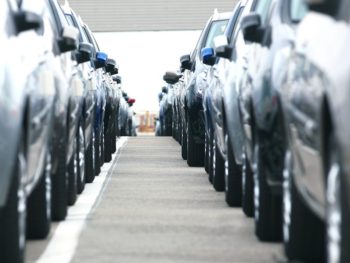Used car market stable in March but pressure on BEV continues
Used car values remained steady in March but battery electric cars (BEVs) continued to come under pressure, according to Solera Cap HPI.

Fuel type data reveals a more complex picture for used car values
Analysis of Cap Live shows the headline movement at the three-year/60,000-mile benchmark saw no change last month.
But fuel type data reveals a more complex picture. BEV values came under the most pressure with a 1.7% reduction or £320. In comparison, demand was particularly strong for petrol and hybrid vehicles. At the three-year mark, values increase by 0.4% (£70) for hybrid vehicles and 0.3% (£45) for petrol cars.
Values for diesel vehicles remained level with no change, while PHEVs fell behind that with a movement of -0.2% (£60).
Chris Plumb, head of current valuations for Solera Cap HPI, said: “With the latest reduction in values for BEVs, this now marks the fourth consecutive month of negative adjustments. Over the past 12 months, only two months, October and November, saw stable values, with BEVs being the strongest-performing fuel type during that time.
“The BEV market continues to be quite fragmented, with performance varying from one model to another, which means we need to keep a close eye on each individual model.”
Cap Live data for three-year-old vehicles reveals that 57% of models experienced value reductions, while 37% managed to hold steady (up from last month’s 30%). But on the brighter side, 6% actually saw positive adjustments.
Despite a wave of negative media coverage, the Tesla Model Y held steady, while the Model 3 dipped by 1% or £163, which is slightly better than the average for all BEVs this month.
The data from Cap Live also shows values have shown remarkable stability across all age and mileage profiles. One-year-old vehicles saw a modest decrease of 0.3%, translating to £125. Five-year-old cars experienced a slight increase of 0.2%, or £20, and the older, higher-mileage 10-year-old cars recorded a minimal drop of only 0.1%, equating to £5.
The ongoing supply gap for vehicles aged between three to five years old continues to impact the availability of vehicles in this crucial age bracket, and dealers are increasingly turning to all available sourcing channels, including physical auctions and online platforms, and retaining a higher proportion of part-exchange vehicles for retail.
Chris Plumb concluded: “The shift over the month has been the increasing selectivity of buyers regarding older, high-mileage vehicles. The trend suggests that these cars may not be as appealing as they once were, likely due to the price increases we’ve seen recently. This evolving buyer behaviour highlights the dynamic nature of the market.”
















Leave a comment